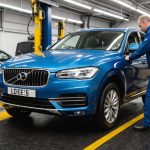The auto industry is undergoing a dramatic transformation, driven by technology and environmental factors. As we embrace a more sustainable future, electric vehicles (EVs) are steadily gaining traction on the roads. In this evolving landscape, understanding the differences in maintenance requirements between electric vehicles and traditional petrol or internal combustion engine (ICE) cars is essential for prospective buyers and car owners alike. This article provides a comprehensive overview of the service schedules for both types of vehicles, highlighting key areas of contrast and addressing how these differences impact costs and vehicle longevity.
Understanding the Mechanics of Electric Vehicles
A New Breed of Vehicles
Unlike conventional cars powered by petrol or gas, electric vehicles operate using a battery and electric motor system. This fundamental shift in mechanics not only changes how we drive but also how we maintain our vehicles. EVs are lauded for their simplicity and efficiency, with fewer moving parts than their petrol counterparts.
In parallel : How does the choice of fuel type impact your car’s performance and emissions?
Key Components
The maintenance requirements for EVs revolve around several critical components:
- Battery Pack: The heart of every EV, the battery requires consistent monitoring to ensure optimal performance and longevity. However, unlike ICE vehicles, which require frequent oil changes, EV batteries generally demand less frequent but more specialized attention.
- Electric Motor: Simple yet powerful, the electric motor requires minimal servicing, eliminating the need for many traditional maintenance tasks.
- Regenerative Braking System: EVs employ regenerative braking, which not only extends the life of brake components but also enhances energy efficiency.
Less Frequent Servicing
EVs simplify the maintenance routine, offering a less costly and less frequent service schedule. While traditional vehicles require regular oil changes, spark plug replacements, and exhaust system checks, these are non-issues for EV owners. The focus shifts to battery health checks and software updates, often performed during regular check-ups.
Also read : What steps should you take if you find yourself stranded on the roadside?
Impact on Costs
With fewer parts to wear out, EV owners face reduced costs for servicing and repairs. This can be a significant factor for consumers weighing the cost of purchase against long-term savings. The reduced need for traditional car fluids and replacements further contributes to EVs being a more cost-effective choice over time.
Petrol Vehicles: Tried and True
The Traditional Mechanics
Petrol or internal combustion engine (ICE) vehicles have been the cornerstone of the automotive world for over a century. Their maintenance requirements are well-established, reflecting a complex interplay of mechanical components.
Regular Maintenance Tasks
ICE vehicles demand a more rigorous servicing schedule, often dictated by mileage:
- Oil and Filter Changes: Regular oil changes are crucial for maintaining engine health, reducing wear and ensuring efficiency.
- Spark Plug Replacement: Essential for ignition, spark plugs wear over time and need periodic replacement.
- Brake Pad Inspections: While EVs benefit from regenerative braking, petrol cars rely heavily on mechanical brakes, necessitating frequent checks.
- Fluid Top-ups: From brake fluid to coolant, maintaining optimal fluid levels is essential for smooth operation.
Higher Wear and Tear
As petrol vehicles comprise numerous moving parts, wear and tear is more pronounced compared to electric counterparts. This results in a more comprehensive and often costly maintenance regime.
Budgeting for Maintenance Costs
The costs associated with maintaining a petrol vehicle can be significant. Regular service appointments, coupled with potential unexpected repairs, add to the financial burden over the vehicle’s lifespan. For many, these considerations are pivotal when deciding between traditional and electric options.
Insurance Implications for EVs and Petrol Vehicles
Navigating the Insurance Landscape
As the automotive sector diversifies, insurance providers are adapting their offerings to accommodate both EVs and petrol vehicles. Understanding insurance implications is a crucial step for any vehicle owner.
Insurance for Electric Vehicles
While electric vehicles are often perceived as costly, their insurance premiums aren’t necessarily higher. Benefits include:
- Reduced Risk of Accidents: Advanced safety features and lower speeds in EVs contribute to fewer claims.
- Specialized Policies: Many insurers now offer tailored policies for EV owners, considering unique aspects such as battery replacement.
Traditional Vehicle Insurance
For petrol vehicles, insurance remains more standardized, focusing on established risk factors and historical data.
Cost Considerations
Several factors influence the cost of insurance for both vehicle types:
- Repair Costs: As EVs have fewer mechanical parts, repair costs can be lower.
- Market Value: Higher purchase prices for EVs may affect insurance premiums.
Making an Informed Choice
Understanding the nuances of insurance coverage for both car types empowers consumers to make informed decisions. Analyzing costs, benefits, and potential savings is essential for maximizing value and ensuring peace of mind.
Conclusion: The Road Ahead
As we stand at the crossroads of a new automotive era, understanding the maintenance differences between electric and petrol vehicles is more crucial than ever. EVs promise a future of simplified servicing, reduced wear and costs, and eco-friendly driving, while petrol cars maintain a stronghold through familiarity and accessibility. For prospective buyers, the decision ultimately hinges on balancing initial investment against long-term savings.
Electric vehicles offer a streamlined, sustainable alternative, but with unique considerations, particularly regarding battery maintenance and insurance. Conversely, petrol cars bring decades of reliability at the expense of higher maintenance costs. As the industry evolves, so too will the options available, shaping a rapidly changing landscape where the future of mobility is both promising and diverse.
In this dynamic era, being informed is the key to unlocking a seamless transition into the world of modern automobiles. Whether you’re drawn to the innovative allure of electric drives or the dependable nature of petrol engines, understanding the nuances of maintenance, service, and insurance ensures you’re well-equipped for the journey ahead.











